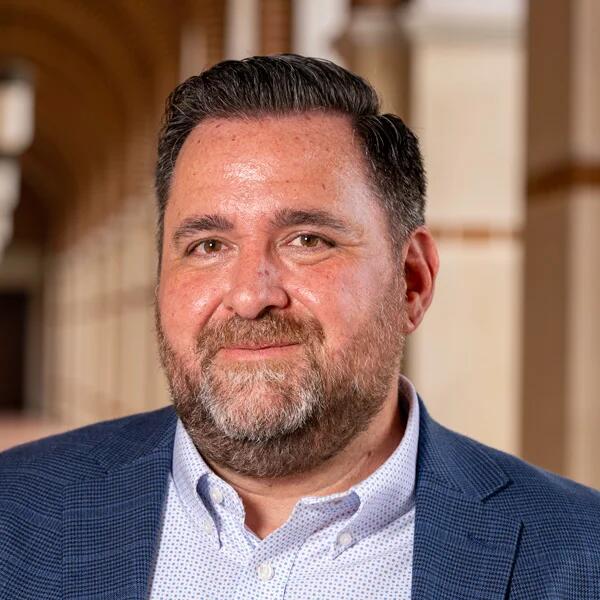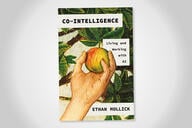You have /5 articles left.
Sign up for a free account or log in.
In our small, tight and connected world of digital learning, Shawn Miller stands out. Through his current and past leadership roles at Rice (where he serves as associate provost for digital learning and strategy) and Duke, Shawn has been an important voice for equity, inclusion and innovation in higher education. I feel lucky to count Shawn as one of my most important friends and colleagues across the postsecondary ecosystem. Since Shawn moved to his current role at Rice, I’ve been hounding him to participate in a Q&A. He finally relented.

Q: Tell us about your role at Rice. What are your main responsibilities, challenges and accountabilities? What are some of the projects and initiatives that you are working on and are most excited about?
A: I’m the associate provost for digital learning and strategy at Rice University. My main responsibilities are basically twofold: build and grow Rice’s digital learning offerings and help set the strategy for Rice’s digital learning future across the spectrum of Rice learning experiences.
Thirteen years ago, Rice formed Rice Online Learning as an internal online program management and development service to grow Rice’s open online portfolio (Rice partners with both Coursera and edX) and to build, support and market Rice’s professional online programs, including Rice’s 6-year-old online master’s of computer science—which just broke the top 10 in U.S. News rankings).
One of my key responsibilities and challenges is taking that unit and the groundwork laid by my predecessors and orienting what we’ve learned towards Rice’s aspirations to grow our graduate and professional student body while also advancing undergraduate education.
I’m involved in several initiatives at Rice, most of which map directly to Rice’s new strategic plan, and three major themes:
- Advancing undergraduate education: Providing more and enhanced opportunities for faculty professional development and support for innovative pedagogical approaches; supporting our new gen ed curriculum through the use of digital learning to strengthen learning outcomes; creating more pathways and opportunities for students and faculty to connect and work together on interdisciplinary projects; supporting global student learning opportunities; expanding alumni and UG interactions and supporting the current reimagining of our summer school and programs.
- Advancing graduate education: Specifically, Rice has a goal to increase the number and size of our master’s programs—both face-to-face and definitely hybrid/online. In addition, we’re exploring stackable certificates and other pathways and learning experiences for professional and lifelong learners who want to engage with Rice. We’re also collaborating on programs and initiatives that support graduate students in their professional development.
- Responsible AI: As part of my role on Rice’s AI Advisory Committee, I’m helping to drive the teaching and learning dimension of Rice’s AI strategy. Like most of my peers at other institutions, we’re examining all dimensions of the AI revolution, including policy, infrastructure, training (for both faculty and students) and creating more opportunities—both formal and unstructured—for faculty and students to explore AI in safe, equitable and responsible ways.
We’re also currently in the middle of a rebrand—officially changing our name from Rice Online Learning to Rice Digital Learning and Strategy. The name change might seem minimal or incremental—but we felt it was important to a) signal a shift from “online learning”—often maligned to the periphery of the core of an institution’s strategy—to “digital learning”—a broader term that can encompass and empower all sorts of learning activities—on and off campus … and b) take advantage of this singular moment in Rice’s evolution (new leadership, new strategic plan, new energy) to also revive and refresh this space. We just rolled out phase one of our website. While it’s open to the public, this site really focuses on reaching our internal audiences—especially Rice’s faculty—to re-engage with them and tell the stories of their digital learning achievements and journeys.
Q: How are you keeping a focus on equity and inclusion in your digital learning work, given the current political climate?
A: Like many of my peers and colleagues, I have so many thoughts (frustrations? fears?) about this topic—but I’ll try to keep it focused on digital learning.
Digital learning has always been about access. By shifting time, place and space, it creates more opportunities for more people to engage in higher education. You don’t have to live in Houston or even be in the same time zone to benefit from what Rice has to offer. We offer a range of options (from free to degree) that wouldn’t otherwise be possible without digital learning.
Digital learning has also exposed and, in some cases, widened existing inequalities. Hardware, digital literacy training and high-speed internet remain unevenly distributed. While costs are dropping and networks are improving, the last-mile problem persists. These barriers have nothing to do with current political debates about the phrase “DEI” and everything to do with ensuring fair access for everyone.
Advancements in AI, particularly its responsible use in teaching and learning, will push the equity and inclusion conversation even further. Are we equipping students with the best platforms, tools and training to succeed? Or are some being left behind due to disparities in access, affordability or policy? And that’s before we even consider deeper challenges, like bias in large language models, which could shape curriculum development and knowledge sharing in ways that reinforce existing inequalities.
That said, these challenges also present opportunities. If we approach digital learning with intention, we can use AI to close gaps rather than widen them—offering personalized learning, adaptive technologies and resources that make education more accessible than ever before. Our role is to ensure these tools are designed and implemented in ways that foster inclusion, not exclusion. With thoughtful strategy and commitment, we can create a digital learning future that truly expands opportunities for all.
Q: Reflecting on your career path, what advice do you have for early and midcareer colleagues who are interested in pursuing a leadership role in digital learning?
A: One of the most important skills in digital learning leadership is understanding how to manage people. As you advance, your role becomes less about deep expertise in any one area and more about bringing together teams with specialized knowledge. The best leaders recognize that the people doing the day-to-day work are the true experts and success comes from listening to them, removing barriers and empowering them to do their best work.
Equally important is strong communication—both within your team and across the institution. Leadership in digital learning isn’t just about managing projects; it’s about building buy-in, advocating for innovation and explaining the value of digital education in ways that resonate with different stakeholders. In other words, being a change agent. Whether you’re working with faculty, administrators or students, you’re always marketing—not just programs, but ideas and strategies.
Understanding the politics of higher education is another critical piece. Universities are complex institutions with different priorities, from faculty governance to accreditation to financial sustainability. Navigating this landscape effectively means learning how decisions get made, who influences them and how digital learning fits into broader institutional goals.
Most importantly, stay curious and humble. Digital learning is constantly evolving and the best leaders are those who continuously adapt, experiment and reimagine their approach. Never be done learning—whether it’s exploring new pedagogical models, emerging technologies or shifting student needs. Say yes to opportunities, even if they push you out of your comfort zone. Failure isn’t a setback—it’s part of the process of innovation.




